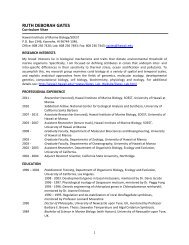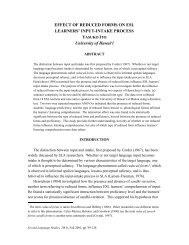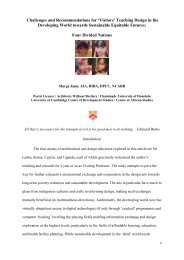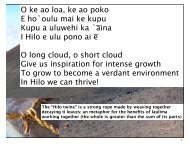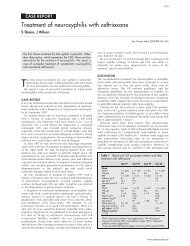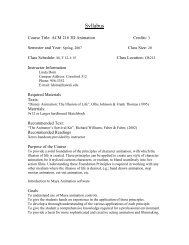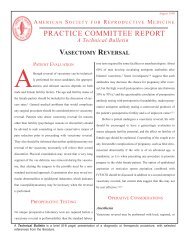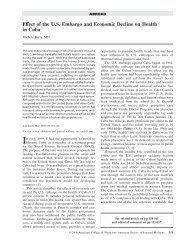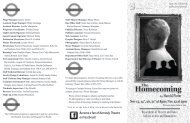Tying and Untying the Trouser-Cord - University of Hawaii
Tying and Untying the Trouser-Cord - University of Hawaii
Tying and Untying the Trouser-Cord - University of Hawaii
You also want an ePaper? Increase the reach of your titles
YUMPU automatically turns print PDFs into web optimized ePapers that Google loves.
50 J. W. Frembgen<br />
instance, covered <strong>and</strong> veiled, is laid down in <strong>the</strong> authoritative texts <strong>of</strong> <strong>the</strong> Qur’an <strong>and</strong><br />
<strong>the</strong> sunna (normative practice) as well as in <strong>the</strong> adab (teachings on behavioural<br />
propriety): <strong>the</strong>se represent an ideal, a paradigm for practical deeds <strong>and</strong> interactions.<br />
The question remains*/how is <strong>the</strong> normative ‘text’ dealt with in social reality? How<br />
is <strong>the</strong> corpus <strong>of</strong> moral values <strong>and</strong> rules contextualised in practical life, that is, in<br />
personal everyday behaviour influenced by local traditions?<br />
In <strong>the</strong> course <strong>of</strong> my interpretative approach, I have chosen <strong>the</strong> trouser-cord as a key<br />
to underst<strong>and</strong> <strong>the</strong> body in its web <strong>of</strong> meaning within normativity, morality, <strong>and</strong><br />
emotion. At face value, <strong>the</strong> cord or string for keeping <strong>the</strong> trousers is only a minor <strong>and</strong><br />
insignificant accessory <strong>of</strong> traditional clothing. 1 But, within <strong>the</strong> anthropology <strong>of</strong><br />
Pakistani dress, it has multiple functions. Which invisible meanings, derived from<br />
moral values <strong>and</strong> from emotion, are attributed to this cord? And in which contexts <strong>of</strong><br />
action <strong>and</strong> communication are those meanings constituted? I argue that <strong>the</strong> trousercord<br />
represents a hinge between <strong>the</strong> biological body <strong>and</strong> <strong>the</strong> social being. It marks <strong>the</strong><br />
boundaries <strong>of</strong> <strong>the</strong> body <strong>and</strong> serves to control sensuality, but at <strong>the</strong> same time it also<br />
refers to a morally shaky ground related to notions <strong>of</strong> sin <strong>and</strong> evil. Generally<br />
speaking, in <strong>the</strong> field <strong>of</strong> body decoration <strong>and</strong> fashion, clothing has an inherently<br />
ambiguous nature, answering to <strong>the</strong> dual dem<strong>and</strong>s <strong>of</strong> modesty <strong>and</strong> seductiveness.<br />
Thus, <strong>the</strong> trouser-cord not only ensures moral protection, but is also a mysterious<br />
means <strong>of</strong> communicating feelings <strong>of</strong> sexuality. In this context, it can be an accessory<br />
<strong>of</strong> erotic imagination as well as a concrete object <strong>of</strong> sexual allurement <strong>and</strong> erotic<br />
playfulness. Therefore, not without reason, <strong>the</strong> trouser-cord plays an important role<br />
in <strong>the</strong> discourse <strong>of</strong> chastity <strong>and</strong> desire within <strong>the</strong> context <strong>of</strong> local Muslim cultures,<br />
especially in Southwest Asia.<br />
Apart from <strong>the</strong> consideration <strong>of</strong> textual, historical, <strong>and</strong> material culture sources,<br />
<strong>the</strong> empirical data on Muslim practices were collected in particular during periods <strong>of</strong><br />
fieldwork in Pakistan <strong>and</strong> India. Before focusing on <strong>the</strong> dimensions <strong>of</strong> prescribed<br />
dress, morality, <strong>and</strong> eroticism within <strong>the</strong> frame <strong>of</strong> a synchronic-orientated study, it<br />
will be useful to introduce briefly <strong>the</strong> trouser-cord (<strong>and</strong> <strong>the</strong> belt) as a detail <strong>of</strong> male<br />
<strong>and</strong> female dress within a broader historical <strong>and</strong> ethnographic context.<br />
The Material Culture <strong>of</strong> Chastity <strong>and</strong> Desire<br />
Belt <strong>and</strong> Loincloth<br />
Since antiquity, belts, waistb<strong>and</strong>s, <strong>and</strong> sashes have been used to tie up flowing<br />
garments. In <strong>the</strong> Christian context, <strong>the</strong> belt <strong>of</strong> <strong>the</strong> priests, monks, <strong>and</strong> angels is a<br />
symbol <strong>of</strong> chastity, abstinence, <strong>and</strong> fidelity to God (Heinz-Mohr 1991, p. 130;<br />
Loschek 1993, p. 55). As a symbol <strong>of</strong> sexual purity, <strong>the</strong> belt divides <strong>the</strong> ‘sinful’ lower<br />
body <strong>and</strong> <strong>the</strong> ‘spiritual’ upper body. It is true that this projection <strong>of</strong> <strong>the</strong> ideas <strong>of</strong><br />
‘good’ <strong>and</strong> ‘bad’ on to <strong>the</strong> upper <strong>and</strong> <strong>the</strong> lower half <strong>of</strong> <strong>the</strong> body can <strong>of</strong>ten be found in<br />
<strong>the</strong> history <strong>of</strong> culture, but <strong>the</strong>y do not appear to be universal. To protect oneself from<br />
a sinful sexual life became especially important for <strong>the</strong> Christian hermits. 2 In <strong>the</strong><br />
so-called ‘fraternities <strong>of</strong> <strong>the</strong> belt’, such as <strong>the</strong> Augustinians <strong>and</strong> Franciscans, <strong>the</strong> friars



